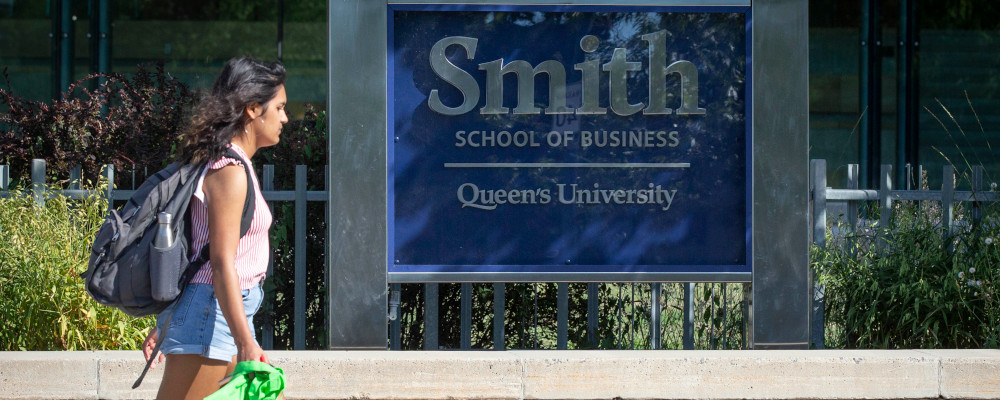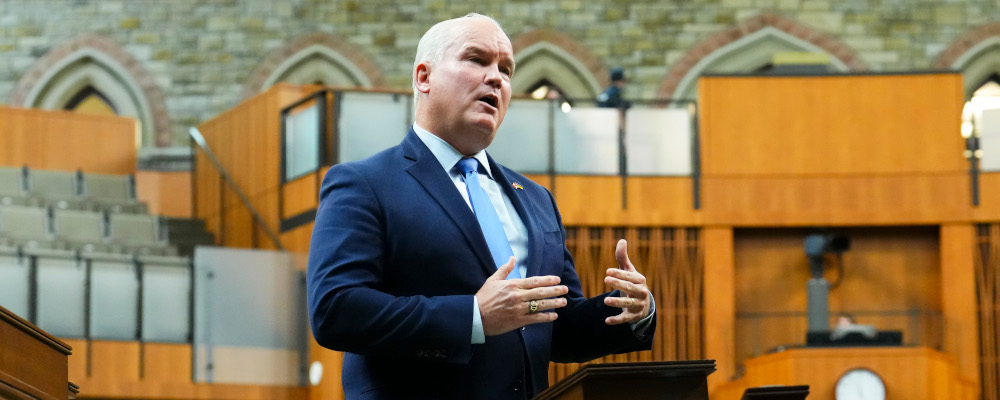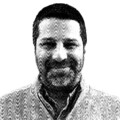The deadline for students to accept Ontario university admissions offers has just recently passed and the process has made one thing abundantly clear for Ontario high school students: there is unprecedented competition for a coveted few admissions to the province’s post-secondary schools. Gone are the days when an 80 average would virtually guarantee entrance into your Canadian university of choice. Today, even a mid-90 might not be good enough.
In 2023, a record-breaking 530,856 applications were submitted by 91,843 Ontario students, averaging nearly six applications per student. To illustrate, this year the University of Western Ontario’s sought-after Ivey Honours Business Administration stream received over 7,000 applications for only 600-700 first-year admission spots. With approximately 10 applications per available spot, the Ivey HBA program set a competitive applicant grade average requirement of 93. Similarly, at the country’s top university, the University of Toronto’s St. George campus’s Computer Science program received over 5,000 applications, resulting in a total of 309 accepted and registered students in 2020. The highly selective program only accepts students with averages in the mid-to-high 90s.
Moreover, Canada admitted a record-high of 550,000 international students in 2022, many of whom enrolled in Ontario universities. It is expected that even more international students will join Ontario universities this year. Their higher tuition fees make them attractive candidates, often occupying spots in the province’s most competitive programs.
Many parents send their children to private schools, hoping that the school’s impressive reputation and high grades will provide an edge in the application process. However, recent data from the University of Waterloo suggests that private school education does not always guarantee success in university.
UWaterloo analyzed Canadian high schools, both public and private, to identify those inflating their students’ marks and to what extent. By comparing the final Grade 12 marks of admitted students with their grades at the end of their first year of university, they determined a school-specific “adjustment factor.” This adjustment factor allows them to alter students’ incoming grades as they see fit, meaning that a 95 may turn out to be an 85 or, in some cases, closer to a 75 when adjusted.
Interestingly enough, some parents of public school students have resorted to private education by having their children drop classes at their current school and enroll in the same course through an accredited private company. Students pursue this option when they realize that the grades required for their program and university of choice are unattainable in school, so they pay to obtain them.
However, the UWaterloo system does not, to my knowledge, account for students who still belong to a particular school but take some courses outside of that school. Therefore, if their school has a favourable adjustment rate, their paid-for 95 might bypass UWaterloo’s measures. It is worth noting that other major Ontario universities have not publicly released anything similar to UWaterloo’s grade adjustment system yet.
In Ontario high schools, obtaining the grades necessary for admission into the province’s top programs is challenging for most students. Many students, whether in public or private schools, work tirelessly to earn the 80s and 90s required for their top-choice programs. However, private courses have created an uneven playing field in the Ontario university admissions process. What were once reputable companies assisting students with alternative learning styles have transformed into “grade factories.”
These grade factories are known to pump out inflated grades, ensuring their students gain admission to their top university choices while building a profile of positive testimonials. Charging fees ranging from $600 to $7,300 per course, depending on factors such as online or in-person instruction, class size, and location, these companies guarantee high grades even without significant effort or work from the students.
In a 2020 CBC article, one student reported that they “barely showed up but ended up with a 90” in their Grade 12 English class. That same student called the private courses he attended “a joke,” citing that everybody in his classes, undeservedly, got 90s.
Nevertheless, many public school students find themselves taking private courses, either online or in-person, for valid reasons. They may require smaller class sizes, personalized teaching, or self-directed coursework. These students should be concerned about the influx of students who do not require the available resources, neglect their responsibilities, and yet achieve high grades, thus exploiting a system that has benefited many.
Similarly, students attending private schools, along with their parents, should take note of these grade factories. Not only do public school students taking out-of-school courses potentially take away spots from their children, but these students also join the private education world during Grade 12, paying a few hundred to a few thousand dollars for the same grades that actual private schools charge tens of thousands of dollars for over the course of four years or more.
These students and the companies providing private courses are largely responsible for the current grade inflation in Ontario high schools. Expecting students to consistently score above 95 in any given class is unreasonable, yet it happens. In my experience, these grades are not earned by the genius, front-row sitting teacher’s pets, but rather by those who might have failed the same course if taken in a public school.
One of the most concerning aspects of this issue is that private courses are not new, and universities have been, presumably, aware of them for years. Universities must know which students have taken private courses and which classes they have completed, as it is indicated on the students’ transcripts.

The transition from high school to university is already challenging, as supported by data from the University of Waterloo. Consider the students who cheated through high school and manipulated the university admissions process—are they being set up to succeed in their first year of university?
The core injustice lies in the fact that these students are taking highly coveted program spots away from others who complete their coursework in school and genuinely learn from it. They could have taken online courses, but they did not want to flunk out of university; they wanted to learn.
Many students are being denied admission to the programs they have aspired to join for years for no valid reason. If the playing field were level, their efforts would be reflected in their outcomes. The current situation is the exact opposite.
Our country’s future is at a direct disadvantage because of these grade factories. By either punishing integrity or rewarding deception, we are setting students up for failure.
In recent months, I have witnessed my classmates distressed by the fact that other students are taking private courses to inflate their averages and gain an edge in the admissions process. They have come to terms with the possibility of not being accepted into their desired programs due to an unfair advantage enjoyed by their peers.
We must raise awareness about this issue and push for transparency and fairness in the university admissions process. Ontario universities need to implement stricter guidelines to ensure that all applicants are evaluated based on their actual abilities and achievements rather than artificially inflated grades obtained through private courses.
The intense competition for university admissions in Ontario, fueled by private courses and grade inflation, is a matter of concern. The current situation compromises the merit and integrity of the admissions process, disadvantaging hardworking students who rely on their academic achievements and genuine efforts.
Recommended for You

Adam Zivo: No Dr. Bonnie Henry, drug prohibition is not ‘white supremacy’

DeepDive: Two-parent families: why they’re so important—and why there’s cause for concern in Canada

Patrick Luciani: Does liberalism make us better people?

Alicia Planincic: Want to regain support for immigration? Prioritize economic immigrants once again











